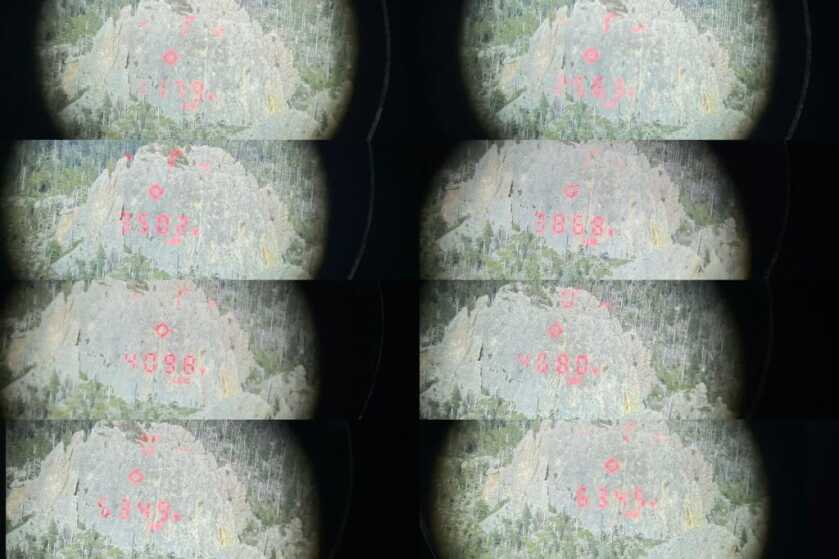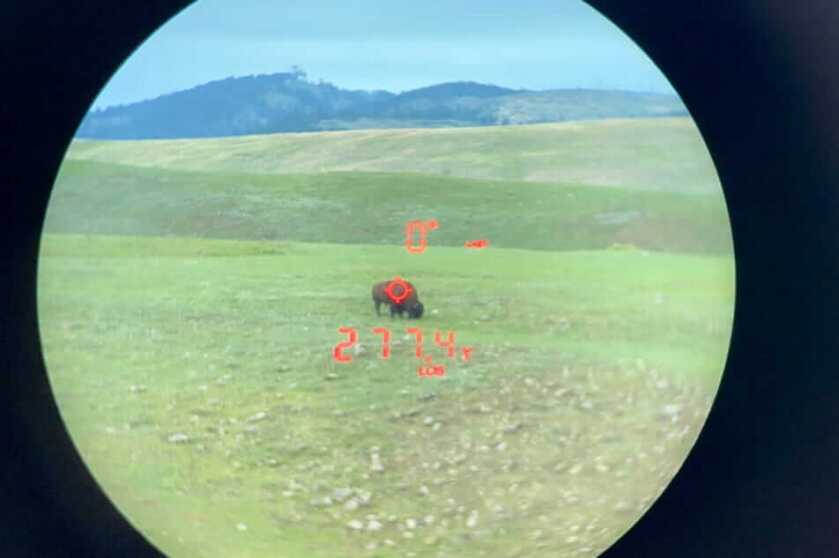
Vortex Optics announced in late April of 2022 the release of three new rangefinders to its existing lineup. These include the all-new Crossfire HD 1400, Diamondback HD 2000, and Viper HD 3000 which are available and shipping now. Capable of utilizing four target modes (Normal, First, Last, ELR) and two ranging modes (LOS, HCD), the Viper gives great versatility. Eager to see how the new Viper HD 3000 performed, I was excited to get it loaned out to review.
Vortex Viper HD 3000 Specifications:
Range Reflective: 3000 yards
Range Tree: 2300 yards
Range Deer: 2000 yards
Accuracy: +/- 1 yard @100 yards
Max Angle Reading: +/- 89 degrees
Magnification: 7x
Objective Lens Diameter: 25 mm
Linear Field of View: 314 feet @ 1,000 yards
Angular Field of View: 6 degrees
Eye Relief: 15.5 mm
Length: 4.2 inches
Width: 1.7 inches
Weight: 9.1 oz
While most modern rangefinders have started to include Horizontal Component Distance or HCD mode, this is a very helpful feature included in the Viper HD 3000. When utilizing HCD mode, this rangefinder will use trigonometry to automatically account for any elevation change between you and your target to calculate the true horizontal distance. This feature allows shooters to range their targets in seconds, then dial and hold for the calculated yardage without accounting for the angle differential in second-hand ballistic calculations.

Boasting the capabilities to range reflective targets out to 3000 yards, and deer out to 2000, the Viper will be more than adequate to cover any of your practical hunting needs. Vortex states that HCD mode is ideal for the following situations:
• Rifle shooting on level ground at any range.
• Rifle shooting out to ranges of 800 yards with mild slopes (less than 15 degrees).
• Rifle shooting out to ranges of 400 yards with moderate slopes (15 to 30 degrees).
• For all archery shooting
While HCD should have most situations covered, users will still be able to use Line Of Sight mode (LOS) to measure the true distance from the rangefinder to the target. The Viper HD 3000 will also read off any change of elevation as a measurement of angle when used in LOS mode. Vortex states that this mode is ideal for “rifle shooters who are using slope correcting ballistic drop data cards, ballistic cell phone applications, or other devices with ballistic programs and who are shooting at distances beyond 500 yards and with slopes greater than 15 degrees.”
Also included is a scanning feature. By pressing and holding the “measure” button, the Viper will show a blinking “scan” on the top middle of the display to notify you it is continuously scanning. This allows users to measure multiple distances as they pan the crosshairs back and forth across target objects. Releasing the measure button will stop the continuous scanning feature, and display the last measured distance.

The menu is simple and intuitive. Pressing and holding the menu button for at least four seconds will allow users to change modes. Pressing the menu button will toggle between brightness settings, LCS/HCD selection, auto-shutoff, or yards/meters as the preferred unit of measure. Pressing the measure button will toggle through each of these previous modes to allow users to select the readings they desire. To save the settings, just press and hold the menu button again for at least 4 seconds to return to the standard power-up condition. There are five brightness settings, that allow you to fine-tune the menu to your environment. I recently reviewed the Ranger 1800 and it only had three settings which didn’t get quite as bright as the Viper HD 3000 so this is a great improvement.
While Vortex specifies the accuracy of +/- 1 yard at 100 yards I wanted to test out its precision in a short and quick test. Marking every 5 yards out to 150 yards using a tape measure, I then tested and recorded the range measured with the Viper HD 3000 and each location was consistently 1.0 yards too far. Starting at 5 yards the range finder gave me a reading of 6, all the way out to 150 yards where it gave me a reading of 151 yards. Not sure if this was a calibration issue from the factory, but consistently 1 yard off is within the factory tolerance zone of +/- 1 yard and is good enough for me.
Pushing out to further distances I was able to consistently range trees out to 1550 yards, and rocks out to around 2,000. Any further than these specified distances, the readings became more finicky. Readings took longer to come back and weren’t as consistent. Now I can say that I was testing without a tripod and holding the rangefinder in my hand, so there is obviously some user error involved. One thing I found interesting was getting multiple values very far off from each other when ranging a rock face in the Black Hills of South Dakota. Ranging the exact same rock face, I got readings anywhere from 1179 to 6345 yards when the actual distance was close to 1200 yards compared to the nearby trees. This may have to do with all of the different types of shiny rocks in the surface of the rock face since I didn’t have this issue at other locations, but I can’t say for certain.


Utilizing a larger objective lens than my previous rangefinder, the Viper gave a more pleasant experience. This gave me a wider field of view at a higher magnification than I received with the Ranger 1800. The set 7x magnification was great for seeing further and helped for glassing some mountains when I didn’t have a set of binoculars on me.
The Viper HD 3000 is both robust and durable. First off, the housing utilizes a sort of “rubber armor” which provides a better non-slip surface and durable external protection. The Viper feels solid and well built while remaining lightweight. The form is functional, and while it is slightly bigger than some other range finders, it fits great in my hand and still fits just fine in a cargo pocket. I hiked 15 or so miles with it stuffed in a cargo pocket without hardly even noticing it. This keeps the Viper small enough to not be burdensome when storing in your kit. Designed to be waterproof, the adverse environments you venture into shouldn’t phase this rangefinder. The body also features a tripod socket for more steady and precise measurements, a reversible utility clip, two lanyard cuts, an adjustable diopter, and an adjustable eyecup for ranging with and without glasses. As with all of the products produced by Vortex, the Viper HD 3000 features an unconditional, unlimited, lifetime warranty.



The Viper HD 3000 is powered by a single CR123A battery and when the battery runs lower than 25%, a battery indicator will start flashing on the screen. Some other rangefinders use harder-to-find batteries, so utilizing a CR123A was a great decision made by Vortex since basically all of my other firearm accessories use this same battery. Cold temps are hard on batteries, so packing a spare would never be a bad idea, but you should still get that low battery indicator popping up when juice is running out. Deciding between the three display brightness settings will also affect battery life, but a cool feature is an auto-shutoff which will go into effect at 15, 30, or 60 seconds of inactivity as set by the user. According to the menu, the Viper should be able to get 4,000 range cycles at the level 4/5 brightness setting on a single battery. Replacing the battery is quick, utilizing a flip-up finger tab. This keeps the device tool-free and is a big improvement over the previous cap that took a flathead screwdriver, coin, or casing to replace the battery.

For the price, I am happy with the glass clarity of the Viper. The image is clear, and as for edge distortion, there is only the slightest amount at the outside 5% of only half the glass. The MSRP for the Viper HD 3000 is $599 and while I was not able to range targets as far as advertised, the performance provided by this unit is still pretty impressive.
The user manual can be found by clicking the link below:

***Buy and Sell on GunsAmerica! All Local Sales are FREE!***

